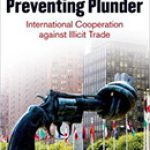Fear and Crime in Latin America: Redefining State-Society Relations

Author: Lucia Dammert
Publisher: New York: Routledge, 2012. 196p.
Reviewer: Mary Etienne | March 2013
“How can the centrality of fear in the daily life of Chileans be explained?” (p. 150). That is the central question that Dr. Lucia Dammert asks in Fear and Crime in Latin America: Redefining State-Society Relations. She builds her analysis of this phenomenon on a three-part conceptual framework. First, she uses the hypothesis that fear of crime has occurred because of socio-cultural changes in society that generate “malaise” (p. 5). Second, she looks at “the traditional analysis of fear of crime, understood as the fear of being a victim of crime” (p. 5). Finally, she advances “a theoretical development of sociology of emotion, which makes it possible to analyze fear in detail by means of a micro-social approach” (p. 5). The author effectively uses both qualitative and quantitative analysis within this framework to interpret fear of crime in Chile.
Dammert explains how insecurity in Chile is partially the result of socio-cultural change, specifically the historical transition from a military dictatorship to a democracy. She describes how the malaise that has manifested itself as a result of the transition to democracy arises from people’s perceptions that they are not participants in the democracy. This perception, she suggests, invokes feelings of helplessness and insecurity. She then goes on to show that changes in citizens’ views on crime-accompanying these socio-cultural changes-were also key factors as crime became perceived as an individual action that the state had to control with punitive measures. Dammert connects these changes in the perception of crime with an increase in citizen insecurity that has led to the emergence of a penal populism, an orientation to crime that seeks to manage insecurity and fear of crime by advocating for hasher punishments for convicted criminals, more accountability of the government, and the criminalization of youth behaviors.
Dammert’s analysis of interviews and focus groups suggests that her respondents in all socioeconomic groups have weak ties with their neighbors, a lack of interest in forming ties, and little interest in participating in social organizations. She makes the observation that ironically, respondents in lower socioeconomic groups have a negative attitude toward community organizations, even though historically it has been community organizations that have championed the issues of lower socioeconomic groups. It would be interesting to further explore why this disconnect exists.
In addition to providing an analysis of the relationship of fear and crime in Chile, Dammert’s study also shows global trends in the criminalization of marginalized populations, in particular youth marginalization and criminalization. Although she does not provide an in-depth analysis of youth marginalization, she does point out that youth behaviors are criminalized as part of penal populism. She also shows that in citizen discourse the ‘other’ typically refers to young men with low socioeconomic status, and that they are often blamed as the group responsible for the violence in Chile (p. 89). These findings are in line with other research on youth marginalization and criminalization in Latin America and throughout the world (Felice, 2008; Giroux, 2003).
Dammert’s research seems to confirm findings and theorizing about the impact of neoliberalism on city and nation-state policies as well as the perceptions of people. Although she does not explicitly provide an in-depth analysis of the connection between neoliberalism and penal policy, she does cite it as one of the contributing factors to the idea that crime is an individual responsibility. In addition, her finding that citizen insecurity is due in part to lack of trust that the state is effective in dealing with crime fits well within the neoliberal rhetoric that the market is best suited for dealing with social issues (Harvey, 2005). In sum, this book provides an important perspective on insecurity in Latin America as well as an interesting case study of the fear of crime in cities.
References
Felice, C. D. (2008). Youth criminality and urban social conflict in the city of Rosario, Argentina. International Journal of Conflict and Violence, 2(1), 72-97
Giroux, H. (2003). Racial injustice and disposable youth in the age of zero tolerance. International Journal of Qualitative Studies in Education, 16(4), 553-565.
Harvey, D. (2005). A Brief History of Neoliberalism. Oxford: OUP.
Mary Etienne is a graduate student in Geography and Urban Studies at Temple University


